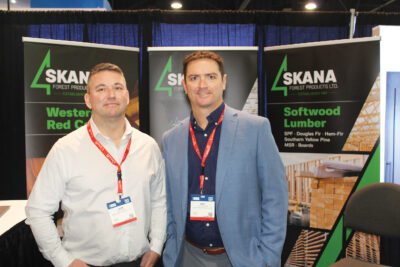For several years, Congress has been seeking to address this country’s outdated infrastructure to improve competitiveness and ensure the safety of our roads, bridges and rails. Housing as infrastructure, however, has been largely left out of this narrative. This needs to change, and wood products are ideally suited to address the many housing needs facing this country.
New home construction has been historically low since the Great Recession and hasn’t yet recovered. According to new research, the United States is short a staggering 5.24 million homes. When you look at affordable housing, there are only 37 affordable and available rental homes for every 100 extremely low-income renter households according to the National Low Income Housing Coalition.
The lack of housing is real, and it is impacting millions of American families. The wood products industry is uniquely poised to meet this challenge across the nation, from rural to urban areas.
Per the U.S. Census, over 90 percent of homes and 85 percent of multifamily buildings are framed in wood. And for good reason. It’s easy to build with, strong, and renewable. It’s also the right material for our planet since wood allows for a significantly smaller carbon footprint than other competing building materials.
Cities like Milwaukee and Cleveland have chosen innovative wood products like cross-laminated timber (CLT) to build advanced multi-family housing structures. Often, the economic advantage of building five or six stories using wood is the only way a project can work financially. Thus, building with wood can address both socioeconomic and climate challenges of housing simultaneously.
Congress is starting to catch up, having only recently introduced legislation that would make investments of at least $82 billion to build new affordable units, $90 billion for tenant and project-based rental vouchers, $10 billion to help first-generation homebuyers with down payments, and $6 billion to improve climate resiliency of homes, among other programs. It’s these type of down-payments from the federal government that can help jumpstart construction to address the gap between supply and demand for homeownership and put the wood products industry front and center for these market opportunities.
In addition to fighting for housing to be recognized as infrastructure federally, the American Wood Council (AWC) has been engaged at the state and local levels. AWC has assisted nine states to adopt the tall mass timber provisions in the 2021 International Building Code allowing for construction with mass timber of up to 18 stories or 270 feet. In Los Angeles in particular, AWC has fought back against harmful legislation that would limit wood construction in urban areas and exacerbate the already dire housing problem.
While the term “housing as infrastructure” is new, housing remains a backbone to this nation’s success. As our population increases and resources are constrained, we must find resilient, carbon-friendly, and sustainable solutions to address our housing shortage. Wood is that solution.
Learn more at awc.org.









